Graduate Research Scholars
About | Application | Past Scholars
2018 Scholars
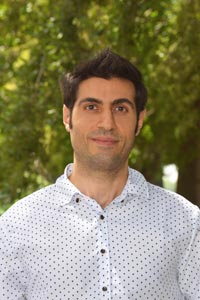 Hamid Vahdat Aboueshagh
Hamid Vahdat Aboueshagh
Louisiana State University
What I Do: I am working on the Chicot aquifer system. I have developed the groundwater model and MT3DMS model. I am currently working on the subsidence. The purpose of developing models is to have a better understanding of groundwater flow and possible issues associated with the aquifer system, especially due to pumping activities. Since this is the first complex groundwater model developed for the area, it can help to discover many groundwater and geological aspects of the region.
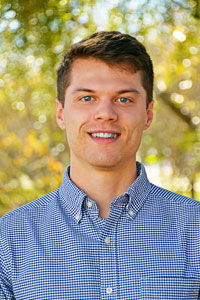 Matthew Barley
Matthew Barley
Louisiana State University
What I Do: I am interested in studying dredge pit evolution, and how it impacts the surrounding coastal landscape and biota. In order to do this, I will be taking sediment cores during late summer once I arrive at Louisiana State University to begin my studies. It is my hope that my research will help to elucidate how dredging impacts the coastal landscape at the Mississippi River delta. Furthermore, I hope that analysis of my sediment cores will also give insight to how biota are affected by dredging and how it affects the spread of the Gulf of Mexico Dead Zone.
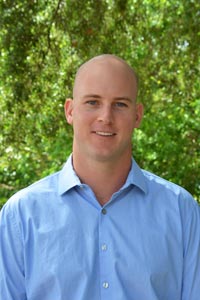 David Behringer
David Behringer
University of Louisiana at Lafayette
What I Do: The goal of my research is to understand how juvenile redfish use different habitat types, and how the use of specific habitats influences diet. Extensive restoration across Louisiana necessitates an understanding of how specific habitat types are used by fisheries species, so that restoration projects can maximize their return on investment. I am using acoustic telemetry to study how juvenile redfish use various habitats, and gastric lavage, and stable isotope analysis to assess diet. By combining movement and diet data, my research will uncover patterns of habitat use and variations in diet between habitat types which will help inform restoration decisions.
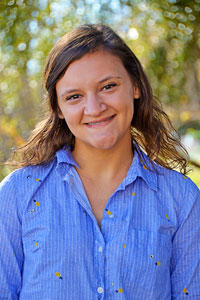 Lauren Bonatakis
Lauren Bonatakis
Louisiana State University
What I Do: My research aims to characterize the freshwater commercial fishery in Louisiana. The overarching goal of this research is to determine opportunities for commercial fishermen in terms of economic growth, management, and access to ensure the survival of the industry. Specifically, I will be mapping historical industry data to look for trends within fish landings and sale value, as well as surveying practicing fishermen to assess their current attitudes, beliefs, and ideas about the status quo of the industry and potential improvements. Understanding the inland commercial fishery in Louisiana is the first step to increasing its relevance within Louisiana’s seafood economy.
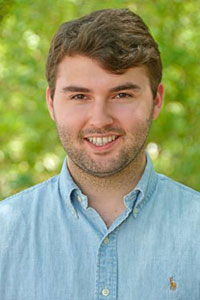 Daniel W. Bosch Jr.
Daniel W. Bosch Jr.
Louisiana State University
What I Do: As an intern for the LA Sea Grant Law and Policy Program, I have assisted with various research projects, including drafting bill summaries, assisting in a visioning conference for fisheries issues, and attended State of the Coast 2018. While in grad school, I also completed a case study on the role of social media in increasing social capital in the aftermath of the 2016 Louisiana Floods that was published in the Journal of Emergency Management. I plan to pursue the Energy Law and Policy Certificate at the LSU Law Center.
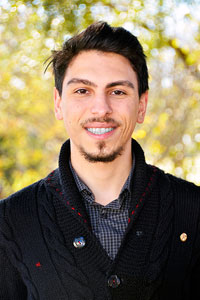 Tryfon Boukouvidis
Tryfon Boukouvidis
Louisiana State University
What I Do: Our research explores communication among meteorologists, emergency managers, and the public. We attempt to identify communication problems and provide more efficient communication on extreme weather and climate events.
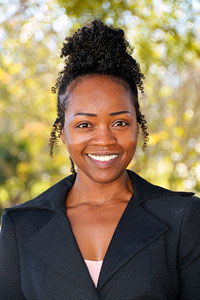 Nacaya Brown
Nacaya Brown
University of New Orleans
What I Do: My research focuses heavily on simulated, oxidative, photo degradation (SOPD) of Macondo oil from the Deepwater Horizon spill and its emulsification capability. Sunlight initiates photo degradation of the exposed oil, producing natural emulsifiers and aliphatic or aromatic compounds containing both polar and non-polar functional groups in the same molecule. Interfacial material (IM), exists at the boundary between oil and water, but the distribution of material between the oil, water and IM is unclear. More research is needed to understand the delicate equilibrium existing between material present in each fraction and how emulsification capability contributes to oil fate. We hypothesize that changes in material distribution via SOPD contributes to stability or degradation of the IM and results in either emulsion stability or breakdown overtime. Macondo will be irradiated using a photo simulator, emulsified and analyzed via GC-Mass Spectrometry and Fluorescence Spectrometry.
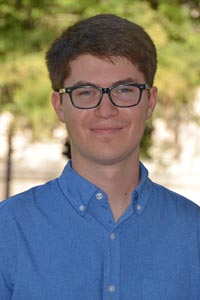 Jack Cadigan
Jack Cadigan
Louisiana State University
What I Do: Marsh creation projects are one of the ways Louisiana is trying to combat our coastal wetland loss problem. As marsh elevation dictates both biological productivity and the volume of dredged fill required by a marsh creation project, my research aims to optimize marsh creation design by developing guidelines for estimating the hydraulic efficiency and cut to fill ratio of dredged sediments for marsh creation projects.
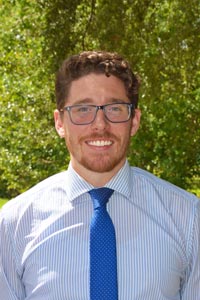 Donnie Day
Donnie Day
Louisiana State University
What I Do: My research focuses on wetland plant community dynamics in response to large-scale sediment diversions. Under greenhouse conditions, we are evaluating plant community response to nutrient and sediment additions, with hopes of understanding the potential problems facing soil structure, plant succession, and nutrient cycling in naturally created oligohaline marshes.
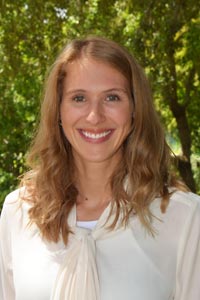 Katherine Ellis
Katherine Ellis
Louisiana State University
What I Do: In the Gulf, red snapper has been a target species for fisherman since the 1970s. Although overfishing has recently declined, their population remains below target levels. As management efforts rebuild red snapper populations, it is possible that this dominant predator will provoke changes in the ecosystem structure. It is widely believed among fisherman, that red snapper are dominant to the closely-related vermilion snapper, and that they will competitively exclude them from both space and food. My research uses stable isotopes, stomach contents, and video data to investigate such competitive interactions. This information will have implications for ecosystem-based fisheries management.
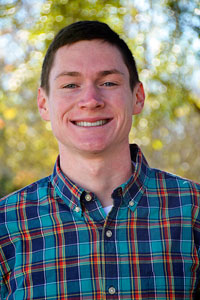 Kenneth Erikson
Kenneth Erikson
Louisiana State University
What I Do: My research is with Dr. Steve Midway at Louisiana State University looking at southern flounder populations off the State’s coast. This research will seek to improve the management of the species by updating our knowledge of key life history information that is needed by the Louisiana Department of Wildlife and Fisheries to improve their stock assessments of the species. Particularly age, growth, and maturity information will be examined from fish caught in LDWF surveys.
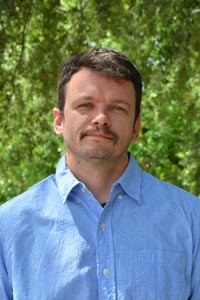 Stephen K. Formel
Stephen K. Formel
Tulane University
What I Do: My research focuses on the how the salt-marsh grass, Spartina alterniflora, interacts with its microbial associates and how these relationships are shaped by disturbances such as petroleum from the Deepwater Horizon oil spill. Microbes living inside plants can help plants persist in extreme environmental conditions, like droughts or increased salinity. Yet, we know very little about the microbiome of S. alterniflora, the dominant plant in Gulf Coast salt marshes. My work will increase our understanding of the plant-microbial relationship in Gulf Coast salt marshes, potentially benefitting restoration and management efforts and helping to build more resilient and healthy coastal ecosystems.
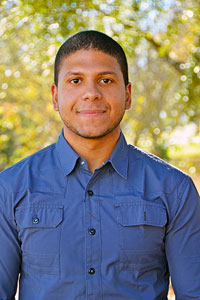 Ahmed Gad
Ahmed Gad
Louisiana State University
What I Do: I am assessing microplastics along the Mississippi River through looking for it in fish stomachs. The fish that I collect will be represent several different species with different feeding behavior. Additionally, the fish will come from different states that are part of the Mississippi River watershed.
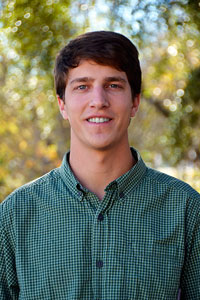 Scott Graham
Scott Graham
Louisiana State University
What I Do: My research will take place at Rockefeller Wildlife Refuge in southwest Louisiana. I will be measuring marsh vertical accretion rates between impounded and unimpounded marshes. Cesium 137 is a radioactive isotope that was emitted in high concentrations during the height of nuclear weapons testing in 1963, that essentially blanketed the earth. Using 1963 as a marker in the soil core we can determine how much a marsh has accreted since then. This research will help coastal marsh managers be informed to whether their actions are increasing or decreasing accretion rates.
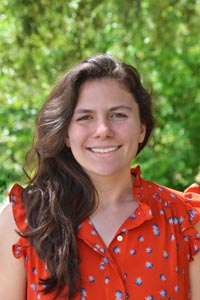 Meredith Guidry
Meredith Guidry
University of Louisiana at Lafayette
What I Do: As a graduate research assistant for the Coastal Community Resilience Studio, my research focuses on implementing a new design for aquifer storage and recovery by discussing the benefits with local stakeholders and policymakers. Alongside this assistantship, I will be beginning my graduate architecture thesis project, which addresses coastal communities using the knowledge attributed from my studies and experience within the Coastal Community Resilience Studio.
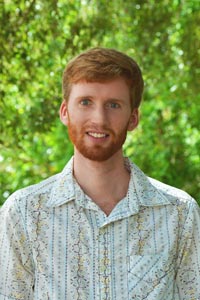 Brian D. Harris
Brian D. Harris
Louisiana State University
What I Do: My work focuses on the geotechnical uncertainties of marsh creation and beach restoration sites throughout coastal Louisiana. Coastal regions, especially Louisiana, have highly unique soils. The soils in on basin can be drastically different to adjacent areas due to varying depositional environments altering plasticity, organic content, and compressibility. For this reason, accurately estimating the soil properties across the state is critical in ensuring the longevity of the project.
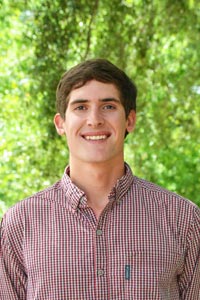 Mason Harris
Mason Harris
University of Louisiana at Lafayette
What I Do: We plan to evaluate restoration effectiveness using remote sensing and Unmanned Aerial Systems (UAS). A primary goal of this project is the development of educational and training techniques for the use of UAS technology in the assessment of coastal restoration. Our objectives: 1. Design, construct, and flight test the UAS. 2. Conduct overflights of field sites. 3. Analyze data, develop assessment metrics and educational products. Data processing of imagery post collection will be crucial to stitch, georeference, and spectrally analyze the data. We will deliver a set of standardized tools to evaluate the primary components of restoration.
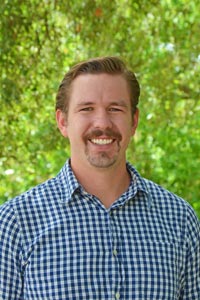 John A. Herbert
John A. Herbert
Tulane University
What I Do: I am investigating the ecology of migratory shorebirds during migration in the Chenier Plain of Louisiana and Grand Isle. My research entails how private and public wetlands in the Chenier Plain function as stopover habitat for shorebirds during migration, and how management approaches at Rockefeller Wildlife Refuge and Grand Isle affect semipalmated sandpiper migration strategies. Specifically, by using GIS, remote sensing and wildlife radio tracking, my research addresses how landscape structure affects distribution, abundance, and stopover duration of migratory shorebirds. My research highlights the important, yet understudied Gulf Coast habitat for migratory shorebirds.
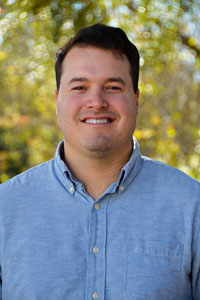 W. Ryan James
W. Ryan James
University of Louisiana at Lafayette
What I Do: My research aims to determine the spatial and temporal drivers of coastal food webs to understand how economically important fishery species will respond to disturbance. I use stable isotope analysis to determine how consumers use resources and obtain energy. Also, I have been working to develop new ways to assess and quantify recovery of food webs following restoration to help managers and engineers design and implement restoration projects that will lead to faster ecosystem recovery.
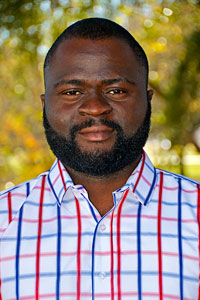 Olajuwon Jimoh
Olajuwon Jimoh
Nicholls State University
What I Do: My research is focused on studying the relationships among belowground biomass, soil shear strength, and soil carbon at 37 wetland sites across Louisiana. The rate of soil carbon accumulation will be determined as an indicator of carbon storage capacity, soil shear strength will be determined as an indicator of soil integrity, and belowground biomass will be determined, which is expected to directly influence soil strength and soil carbon. This research will provide an indication of the ability of these valuable ecosystems to resist erosive forces and continue to provide important ecosystem services such as climate mitigation.
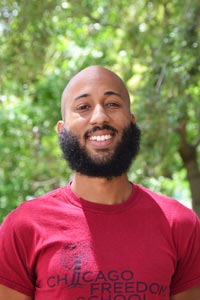 James Jordan
James Jordan
Louisiana State University
What I Do: I am researching how students are impacted by their involvement with the Coastal Roots program. Specifically, how their understandings of science and its relationship to coastal restoration are affected by the program.
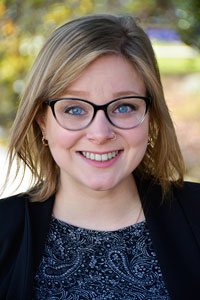 Marisa Karpinski
Marisa Karpinski
Louisiana State University
What I Do: I am currently working on a project with the geography department and the mass communication department researching how climate stakeholders interpret and understand climate tools such as the cone of uncertainty, convective outlooks, the US Drought monitor, etc. We are doing surveys and interviews with broadcast meteorologists and emergency managers.
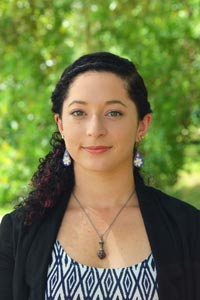 Kellyn LaCour-Conant
Kellyn LaCour-Conant
Nicholls State University
What I Do: The wolfberry tree doesn’t attract much attention. With small leaves and petite purple flowers, it’s easy to overlook. However, Lycium carolinianum is a nutritious cousin of the superfruit goji berry, and is the only Lycium species native east of the Mississippi River. In the Southeast locals call Lycium wolfberry, Christmasberry, matrimony vine or fraises (French for “strawberry”); the berries fruit around December and are believed to be an aphrodisiac. Wolfberry trees are also valuable players in wetland ecosystems— they can survive environmental extremes like salinity and drought, provide food and habitat to wildlife and limit erosion with their extensive root systems.
Despite a rich global history on wolfberry, very little research has been conducted on American species, and none whatsoever on wolfberry in Louisiana. My research seeks to change this by profiling wolfberry communities in Dulac, Fourchon, Cocodrie and Grand Isle to compare mating patterns, plant hardiness and seed quality. This data can inform nursery management, agricultural cultivation and coastal restoration. As the Louisiana coast continues to erode, the soil becomes more saline and our weather more extreme, we’ll increasingly rely on resilient plants like wolfberry to help us adapt to our changing environment and protect our coast.
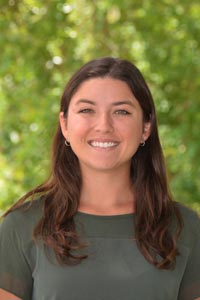 Olivia LaHaye
Olivia LaHaye
University of Louisiana Lafayette
What I Do: The heavy use of groundwater from the Chicot Aquifer has increased subsidence and saltwater intrusion in Louisiana, thus increasing the rate of coastal erosion. Aquifer Storage and Recovery (ASR) is an innovative process that could be used to improve this issue. ASR is the process of collecting water in surplus and injecting it into an aquifer for when it is needed. My research is to measure the feasibility of using ASR to capture and store surface water to replenish the Chicot Aquifer. By storing surface water, flooding can be improved, and by injecting it into the aquifer, the increase in subsidence and saltwater intrusion due to aquifer depletion can be controlled.
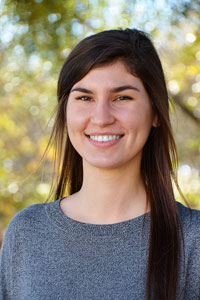 Jordan Logarbo
Jordan Logarbo
Louisiana State University
What I Do: The objective of my research is to evaluate the success of the Gulf ribbed mussel (G. granosissima) transplantations into shorelines dominated by the smooth cord grass (S. alterniflora). My research will also further evaluate the potential mutualistic relationship between ribbed mussels and S. alterniflora and the implications for coastal restoration work. This project is relevant in mitigating shoreline erosion in coastal Louisiana because ribbed mussels are an under explored living shoreline restoration tool.
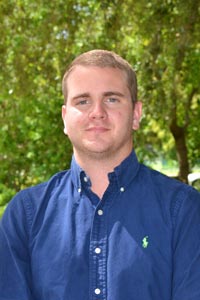 Jonathan Long
Jonathan Long
University of New Orleans
What I Do: Our group research consists of applying reverse-phase HPLC methods, coupled with size exclusion chromatography methods, in order to characterize different components of dissolved organic matter collected from both freshwater and saltwater ecosystems. This preliminary research will ultimately provide insight regarding how the composition of the dissolved organic matter correlates with its reactivity. This is critical for understanding feedback loops between dissolved organic carbon reservoirs and carbon dioxide in the atmosphere.
 Juita Martinez
Juita Martinez
University of Louisiana at Lafayette
What I Do: My research assesses the effects of intensive restoration practices on Louisiana’s coastal barrier and bay islands. These islands are natal sites for a variety of seabirds including Louisiana’s state bird, the Eastern brown pelican (Pelecanus occidensitalis carolinensis). I assess restoration impacts by examining pelicans’ nest success, predator presence, vegetation communities and toxicological influences. In retrospect to their historical extirpation and trophic level status, the brown pelicans’ health is strongly correlated to island suitability and environmental health. Due to statewide efforts in mitigating land loss due to sea level rise understanding the impacts of current practices will help inform future coastal management plans.
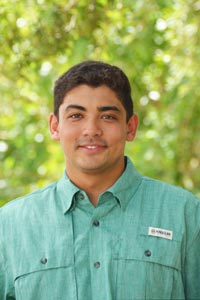 Peter Mates
Peter Mates
Louisiana State University
What I Do: Determining Pre-Project Wetland Soil and Estuarine Sediment Physical Properties and Phosphorus Cycling in the area of influence of the Mid-Barataria Sediment Diversion.
 Mrunmayee Girish Pathare
Mrunmayee Girish Pathare
University of Louisiana at Lafayette
What I Do: I study the drivers of phytoplankton growth and community composition in Vermilion Bay and the northern Gulf of Mexico. Phytoplankton form the base of aquatic food webs, and their community composition is affected by environmental factors and predation by zooplankton. My research focuses on the role of phytoplankton and their microzooplankton consumers in the microbial food web, and how this affects trophic transfer of carbon in the lower trophic levels.
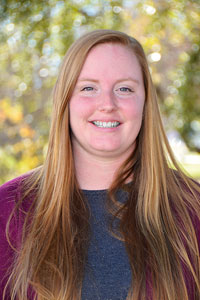 Megan Ryba
Megan Ryba
Southeastern Louisiana University
What I Do: For my research I will be using environmental DNA (eDNA) to evaluate the fish communities of artificial reefs in Lake Pontchartrain in Louisiana. Artificial reefs are used around the world in lakes and oceans to support biodiversity. The artificial reefs in Lake Pontchartrain were deposited in the lake over a span of 15 years but not much is actually known about which fish species are using them. Environmental DNA is a non-invasive method that allows us to look at what species are present without disturbing the community. My research will help with the planning, design, and management of future reefs to further support the fisheries community both in Lake Pontchartrain and in other bodies of water.
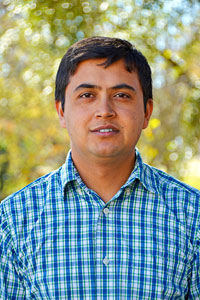 Yadav Sapkota
Yadav Sapkota
Louisiana State University
What I Do: The current wetland carbon credit methodology does not include the incentive (potentially several times greater than current estimate) for preserving the stored carbon, by preventing wetland loss through wetland restoration, due to uncertainty in the fate of eroded/submerged carbon. My research aims to understand the fate of preserved carbon as wetland erodes and transported/submerged into open water. 11 stations in different compass directions (three transects per station) have been established in northern Barataria Bay for marsh edge erosion measurement. Deep soil cores (~2 m) will be taken from each transect from marsh edge (before erosion) and open water (after submergence). Soil physiochemical properties and the biogeochemical process will be determined through laboratory experiment.
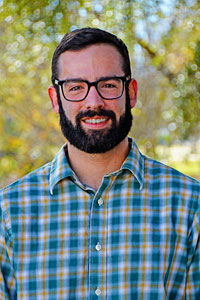 David R. Smith
David R. Smith
Louisiana State University
What I Do: I will be conducting a stakeholder evaluation of the southern flounder fishery in the Gulf of Mexico that will assess the overall use of stocks by both recreational and commercial fisherman. This is a two-part study on the southern flounder fishery in the Gulf of Mexico as we work to identify age, growth, and complete a stock assessment of the fishery as well as evaluate the stakeholder involvement within the fishery.
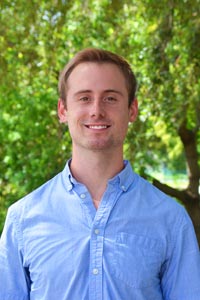 Caleb Taylor
Caleb Taylor
Louisiana State University
What I Do: Louisiana boasts the largest blue crab fishery in the United States, yet research is lacking in the region. I am hoping to fill a void by understanding how areas of high inflow (active delta) affect blue crab distribution, abundance, and dietary subsidies compared to areas of low inflow (inactive delta). I have sites in Pass a Loutre wildlife management area (high inflow) and sites in and around Lake Mechant (low inflow). We are using throw traps to understand densities and nekton communities, and stable isotopes to understand dietary subsidies and trophic position of blue crabs.
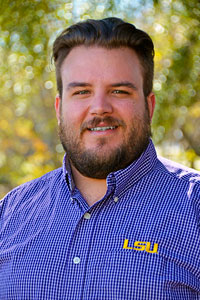 Clay Tucker
Clay Tucker
Louisiana State University
What I Do: I study dendrotempestology: the effect of hurricanes on trees. The growth of a tree is determined by local environmental factors, and these factors are recorded in the trees’ rings. I use tree rings to describe past climate, especially as that climate relates to the northern Gulf of Mexico coast and impacts from hurricanes.
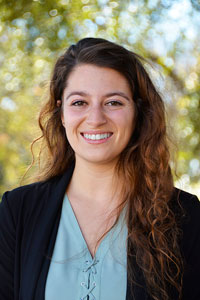 Jessica Vaccare
Jessica Vaccare
Louisiana State University
What I Do: Once coastal marsh erodes, it falls into the estuary and becomes submerged. This area of newly submerged, carbon rich marsh soil may allow the coastal ecosystem in Barataria Bay, LA to have a higher capacity for nitrate removal than previously thought. My thesis work seeks to understand the differences in denitrification potential of marsh soil, submerged peat fringe sediment, and estuarine sediment in Barataria Bay. This data will be a vital tool for modelers and scientists researching how the influx of nitrate from the future Mississippi River diversions will impact an important area of the Louisiana coastal zone.
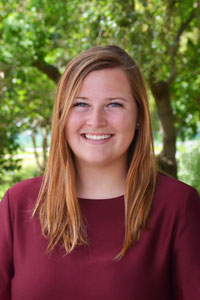 Jessica Villers
Jessica Villers
University of New Orleans
What I Do: I will be researching sediment and water fluxes in both restored and unrestored shorelines, and investigate how sediment dynamics compare between different restoration/stabilization methods and natural shorelines. The long term effects of these restoration/ stabilization methods are relatively uncertain. My research also aims to give insight and address the long-term and short-term effects that engineered structures have on vertical accretion, which is essential to marsh sustainability.
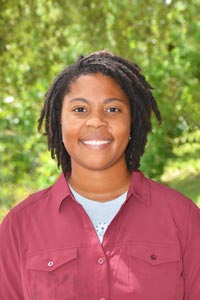 Kiah Williams
Kiah Williams
Tulane University
What I Do: I aim to continue shorebird banding and nest-monitoring efforts in partnership with Audubon Louisiana, as well as attach nanotags to Wilson’s Plover juveniles and adults to determine survival rates and natal dispersal patterns. Using MOTUS receiving towers, I will be able to determine whether juveniles return to their natal site the following year for breeding, and the distance at which they establish breeding sites from their natal site. This work is important for the conservation of Wilson’s Plovers and the implemented methods and information collected can be expanded to apply to other shorebird populations on the Louisiana coast.
